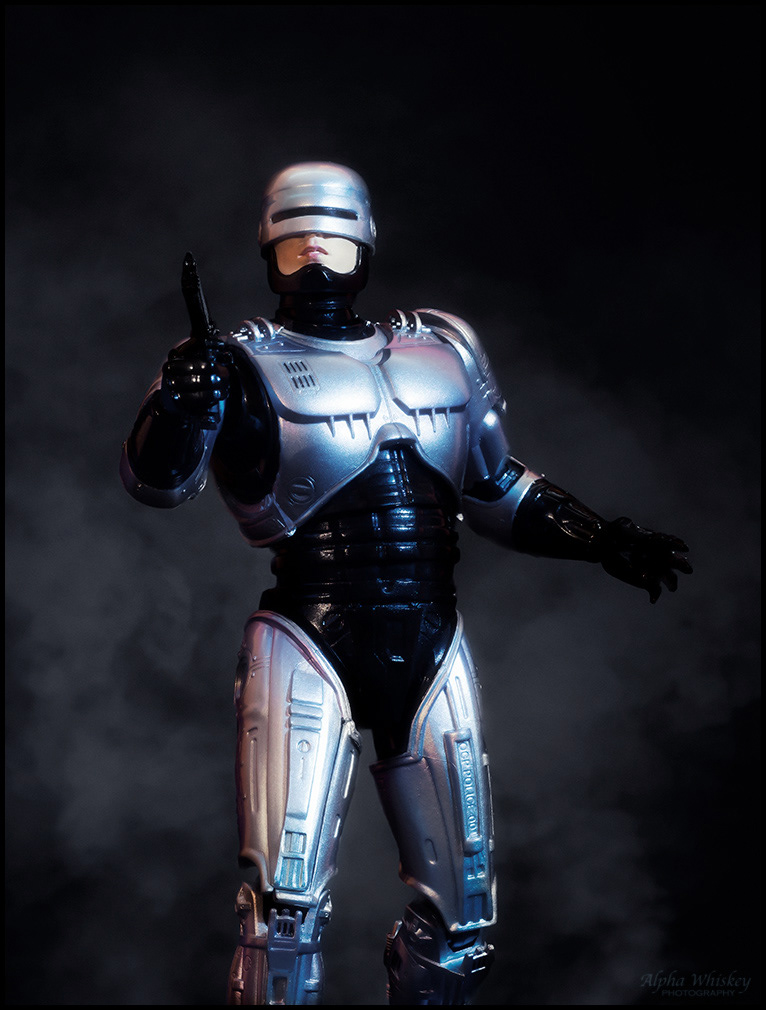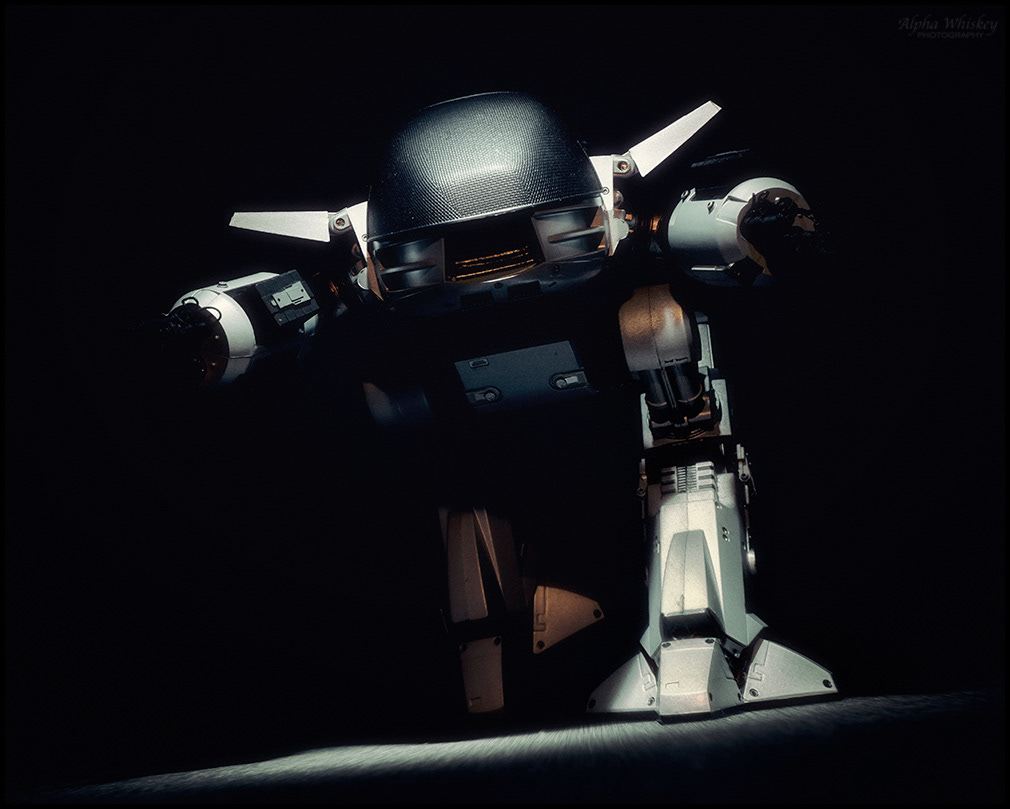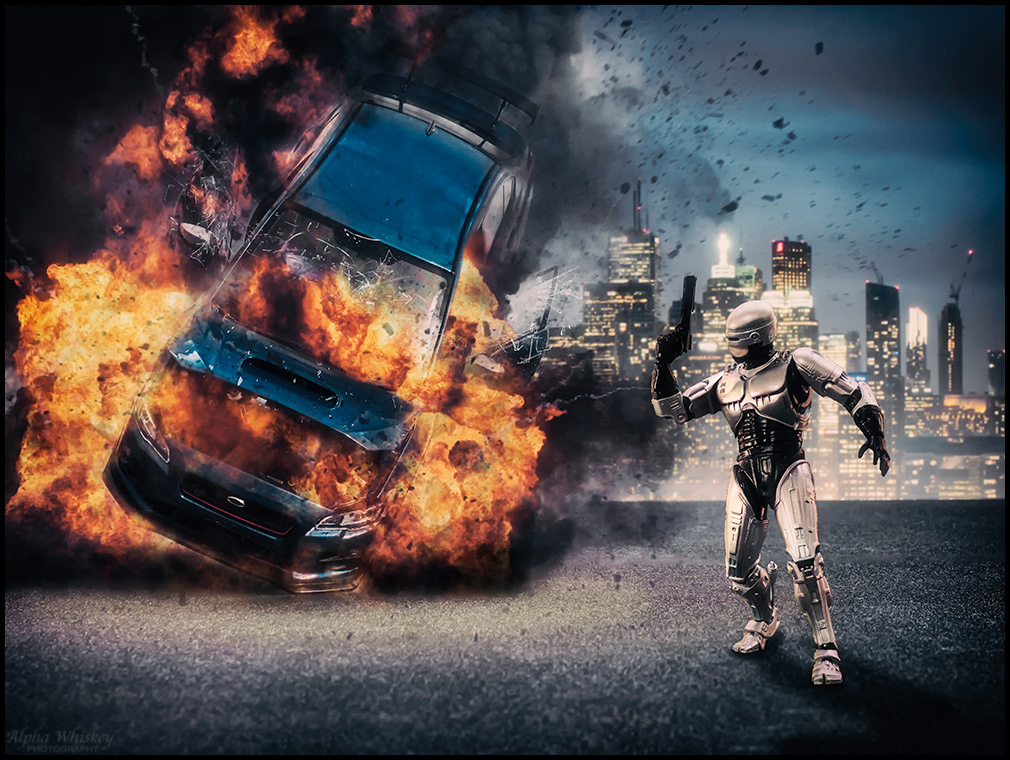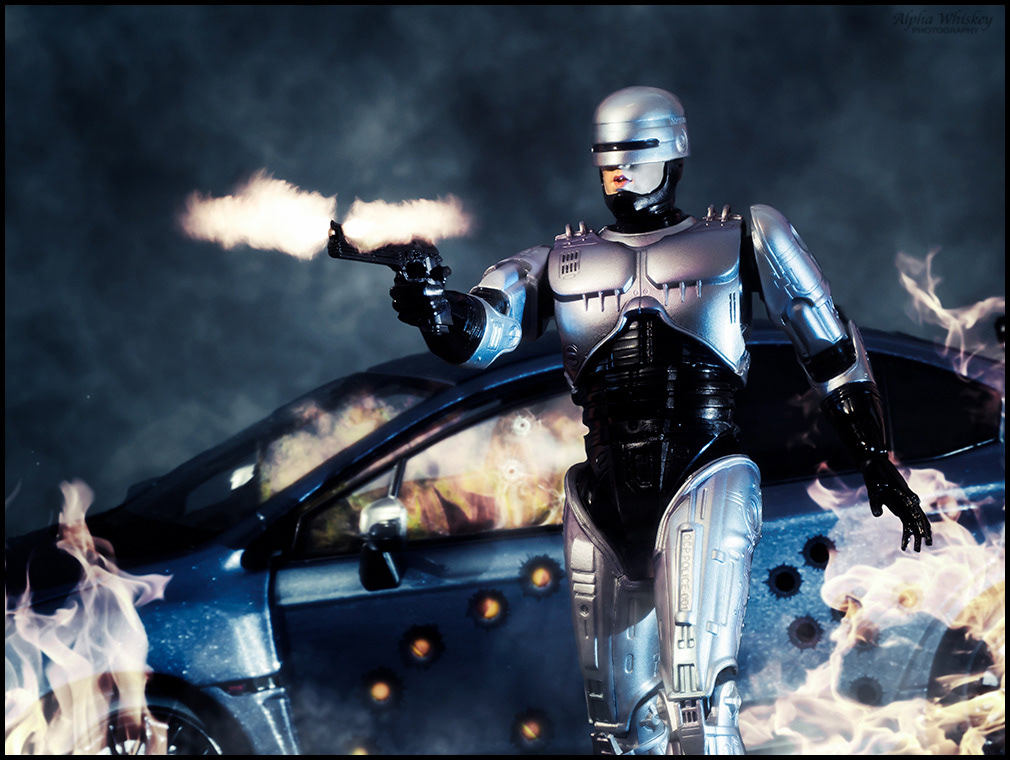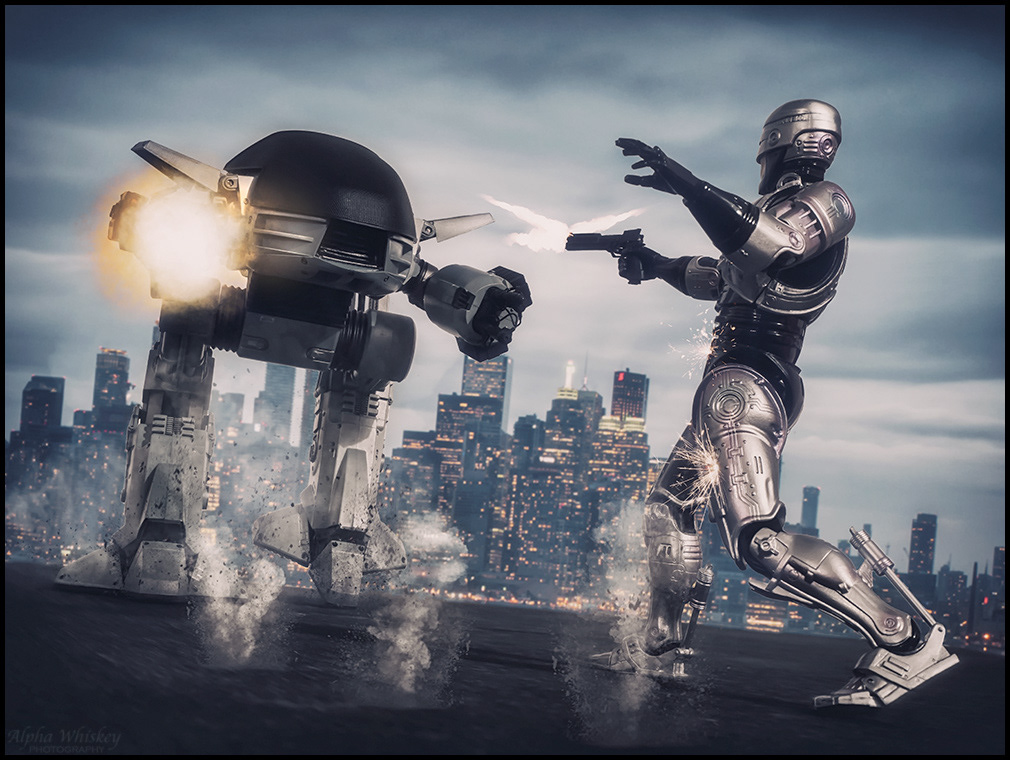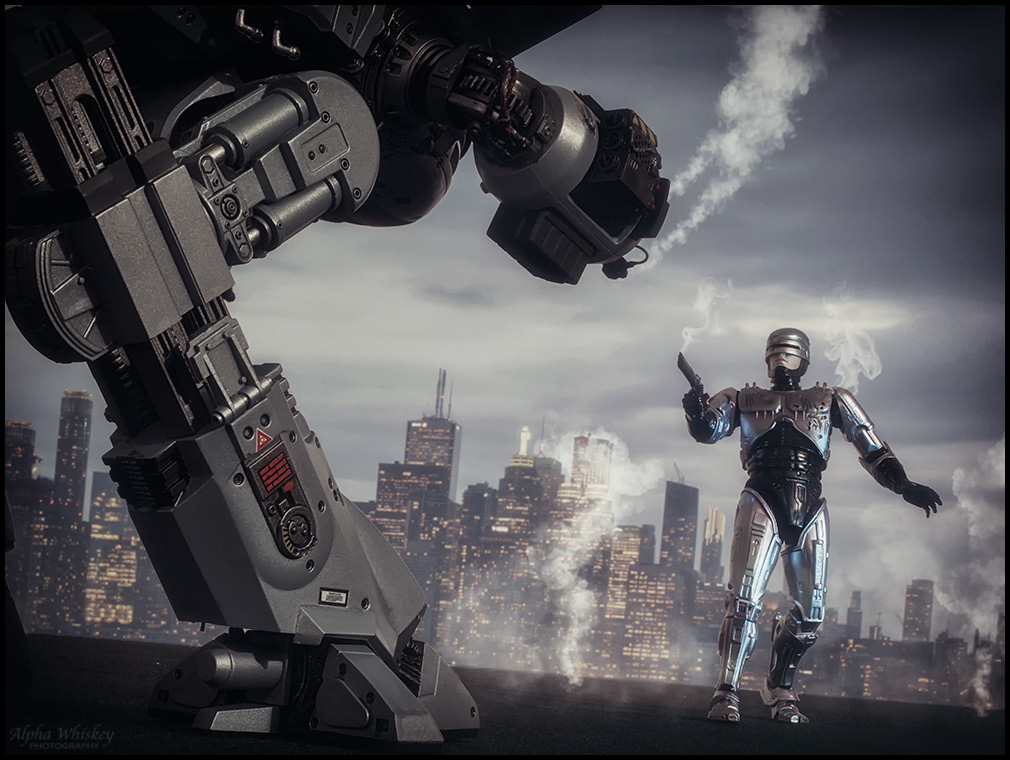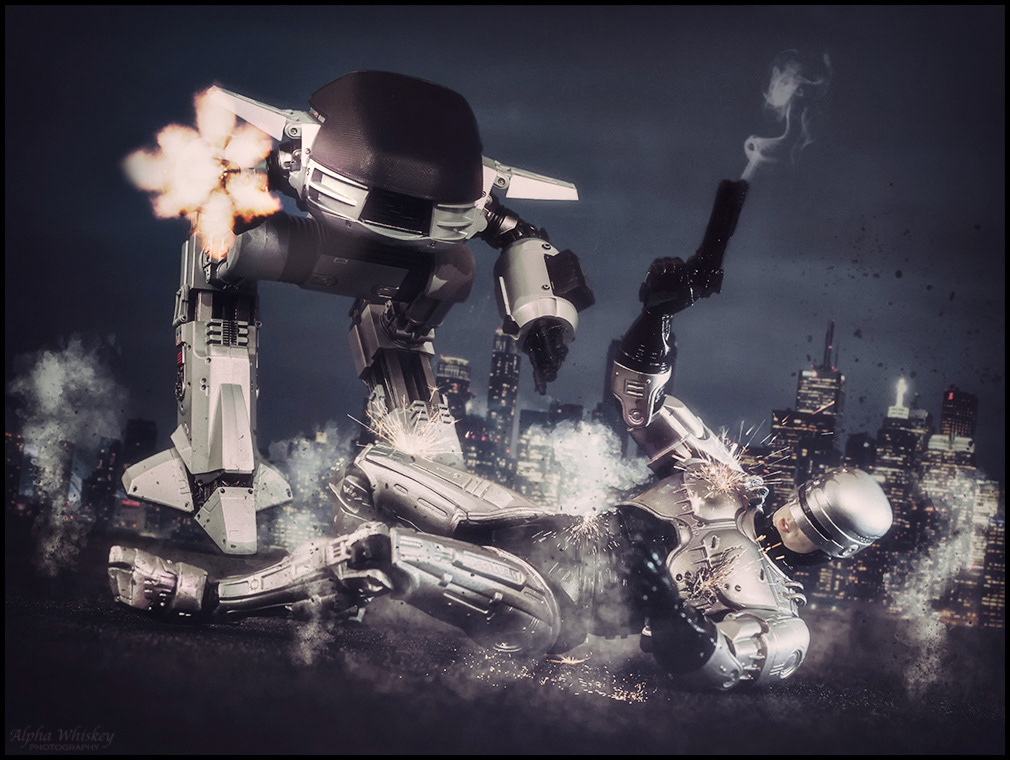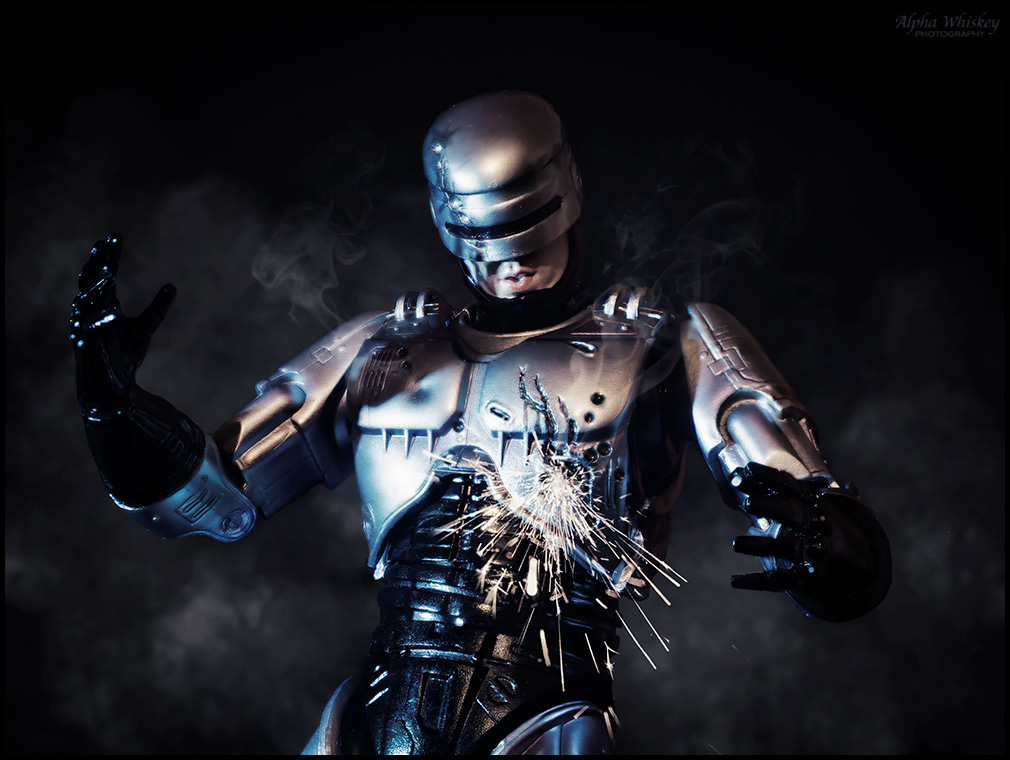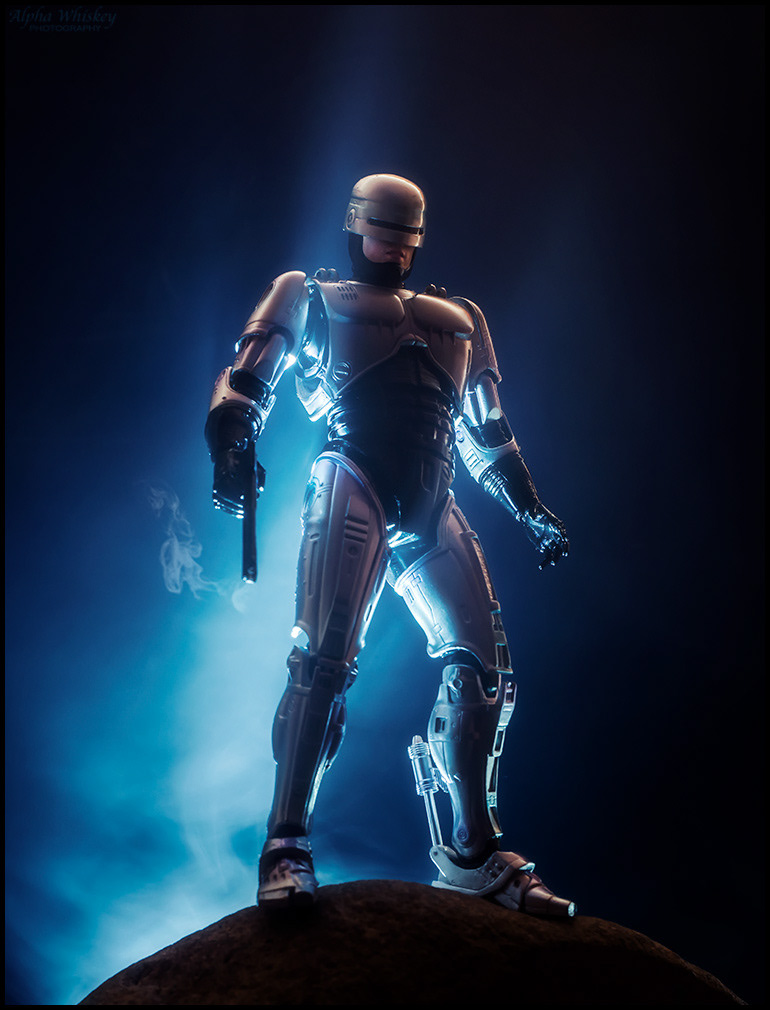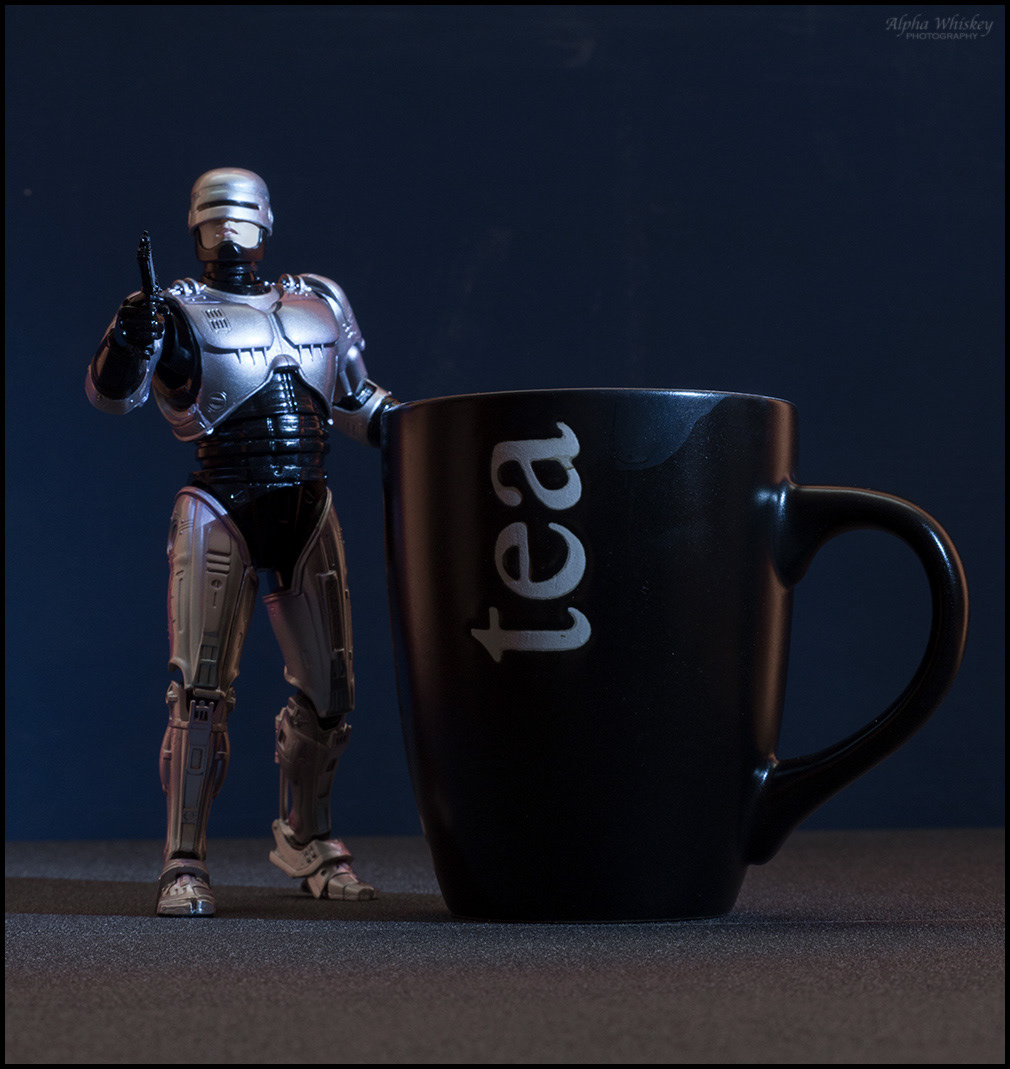Toy photography is indeed a pretty big genre but the idea of grown men playing with and posing figurines and dolls seems like a bit of a weird subculture to me. No offence. And the toys still look like toys. My aim has always been to try to make scale models look like the real thing (ready to concede that I may not always succeed!).
So when someone offered me a highly articulated and fairly realistic 15cm Robocop and the ED-209 model from the original 1987 film, of which I’m a huge fan, I decided to see what I could do to pay homage to a classic.
If you haven’t seen the original 1987 film I’d highly recommend it. Director Paul Verhoeven and an excellent creative team made a $13million movie look far more expensive and made you believe a guy wearing a plastic and fibreglass costume was really made of titanium. (The movie won an Oscar for sound design). Even the stop-motion animation of ED-209 by Phil Tippet holds up fairly well, and together with a stirring, genre-defying orchestral score by Basil Poledouris the film is quite the visceral experience. Everything that came after was increasingly inferior and had none of the satire, underlying themes and social commentary of the original film. Even Robocop 2, which was directed by my friend’s mentor, the late Irvin Kershner, was a generic (and rather nasty) action piece; a most unbefitting swan song for the director of the now highly regarded Star Wars: The Empire Strikes Back (Hey, does anyone have any AT-ATs? ;))
Given that one of the themes of Verhoeven’s film was crucifixion and resurrection (he referred to him as the American Jesus), I had the Robocop figure emerging from and surrounded by lots of smoke, like a phoenix rising from the ashes. I also tried to emulate some familiar poses from the film. The images seem to work as well as they do in part because the figure has interchangeable faces and hands, and a battle-damaged helmet and chest plate. Plus, as a cyborg, the character is supposed to look stiff so that wasn’t a handicap. I did, however, have to choose the right poses from the right angles to be convincing enough. I took inspiration from the film’s director of photography, Jost Vacano, who shot Robocop from low angles to give him a more divine and deified presence.
I wasn’t too interested in distracting backgrounds (especially if these were to be printed large) so I mostly shot everything against a dusk blue backing with directional illumination in keeping with the dark tone of the movie. I know Robocop was a silver hue in the first movie but I used blue spot lighting to give the paint job a more metallic look. Where the background spaces were greater I added in a skyline. The muzzle flashes were added in post too. I also subtly tidied up obvious gaps and ball joints wherever they affected the realism, and shadows played their part in masking the plastic.
I hope in some small way this set pays tribute to the genius of Rob Bottin, who created the Robocop suit for the movie, and Phil Tippet, the stop-motion genius who created the ED-209 sequences in the pre-CGI era.
To quote Robocop himself, Thank you for your co-operation.

When Robocop is first introduced in the film he is obscured by frosted glass. So I took a pane of frosted glass and placed the edge of a photo frame in front of it to create a similar look.


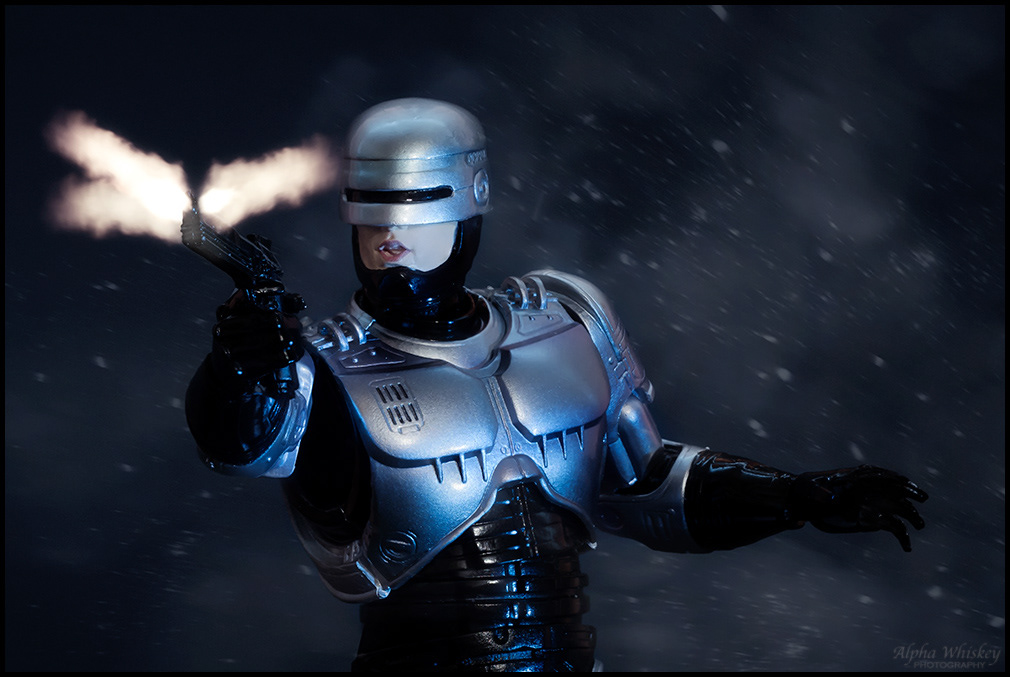

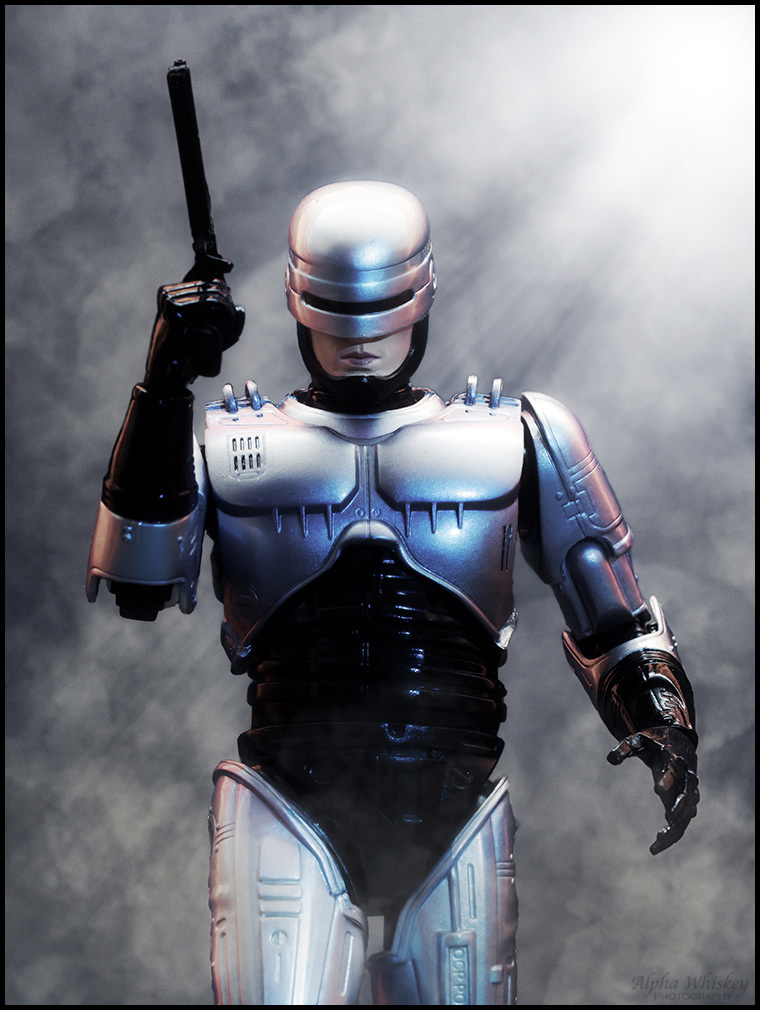
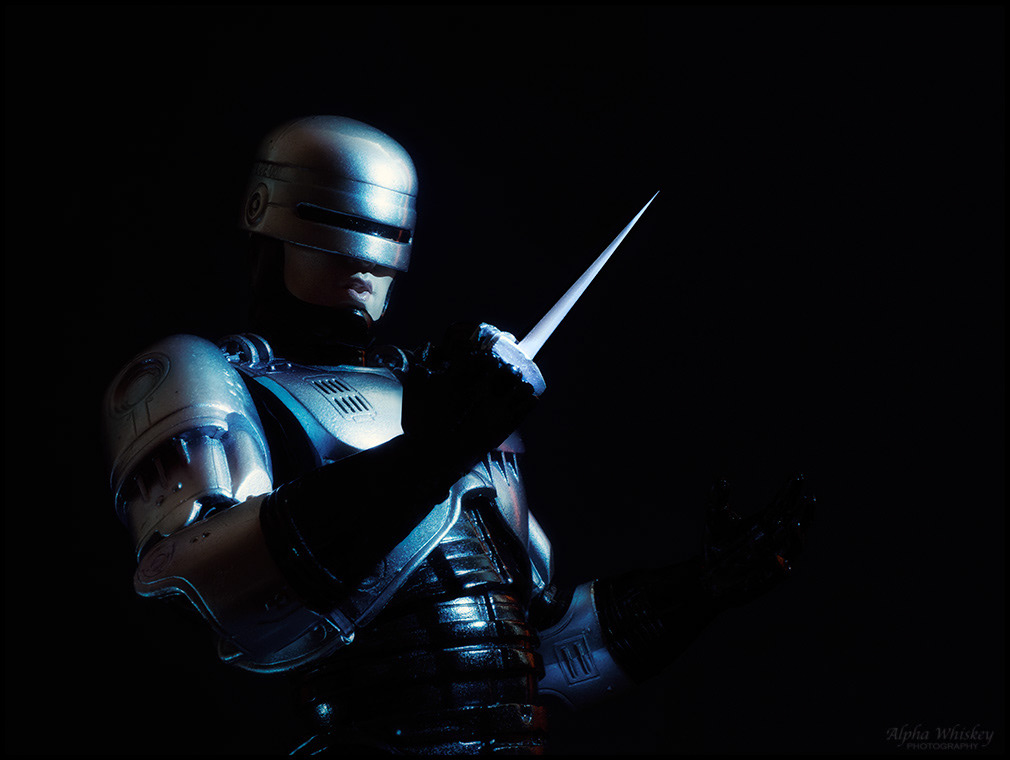
A photo of London from my archives provided a suitably futuristic and quasi-brutalist architectural background.

